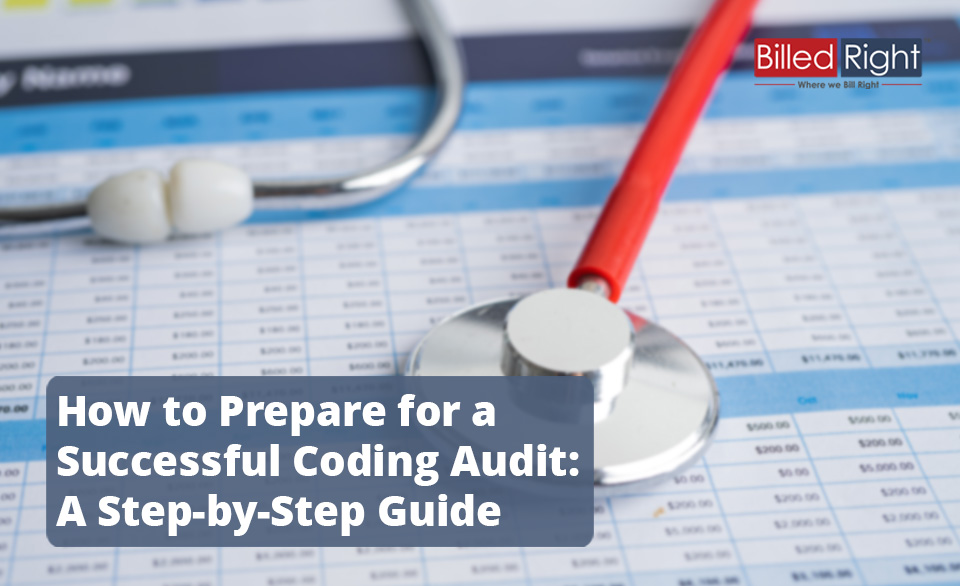How to Prepare for a Successful Coding Audit: A Step-by-Step Guide

Preparing for a Coding Audit
Preparing for a medical coding audit is essential for healthcare organizations aiming to maintain compliance and optimize revenue cycle management. Understanding the importance, key objectives, and essential components of a coding audit is crucial in laying the groundwork for a successful review.
Importance of Coding Audits in Healthcare
Coding audits play a pivotal role in ensuring that healthcare providers accurately report medical services and procedures. These audits help identify discrepancies, minimize errors, and ensure proper reimbursement. They are instrumental in maintaining compliance with regulations and avoiding potential legal issues.
The benefits of coding audits extend beyond compliance; they also contribute to financial health. Studies suggest that organizations with regular audits experience a reduction in denials and an improvement in overall coding accuracy.
Key Objectives of a Coding Audit
The primary objectives of a coding audit revolve around enhancing both accuracy and compliance. The following table outlines the key goals of conducting a coding audit:
| Objective | Description |
|---|---|
| Accuracy Improvement | Ensure that codes reflect the correct diagnoses and services performed. |
| Compliance Assurance | Verify adherence to federal regulations and guidelines to avoid penalties. |
| Revenue Maximization | Identify areas where undercoding may be impacting revenue. |
| Error Detection | Recognize common errors that could lead to denials. |
Healthcare professionals can utilize coding audits as a tool for continuous improvement by analyzing the data and identifying areas for training and development.
Essential Components of a Coding Audit
A comprehensive coding audit involves several critical components to ensure its effectiveness. The following aspects are essential to a successful coding audit process:
- Selection of Samples: Careful selection of medical records for review is crucial. Samples should represent various departments, services, and physician practices.
- Documentation Review: Analyzing medical records and related documents is vital to verify coding accuracy and assess compliance.
- Utilization of Tools: Employing appropriate tools and software can streamline the auditing process.
- Engagement of Qualified Auditors: It’s important to involve skilled auditors who understand medical coding and regulatory requirements.
- Tracking Findings: Establishing a system for tracking audit findings and improvements helps in continuous monitoring and enhancement of coding practices.
By recognizing the significance, objectives, and essential elements of a coding audit, healthcare professionals can effectively prepare for and conduct audits that enhance the overall efficiency and accuracy of coding practices.
Expert Steps for Success
The process of preparing for a coding audit requires careful planning and execution. The following key steps help ensure that the audit is effective and comprehensive.
Establishing Audit Goals and Scope
The first step in preparing for a coding audit is to define clear goals and determine the audit’s scope. This involves identifying specific areas of focus, such as compliance, coding accuracy, and documentation adequacy. Establishing the goals helps create a targeted approach, maximizing the audit’s effectiveness.
| Audit Goal | Description |
|---|---|
| Compliance | Assess adherence to coding regulations and guidelines |
| Accuracy | Evaluate the correctness of code assignments |
| Documentation | Review the quality and completeness of supporting documents |
Developing an Audit Plan
Once goals and scope are established, the next step is to formulate a detailed audit plan. This plan should outline the methodologies, timeframes, and resources required for conducting the audit. It should also specify the team members involved and their respective responsibilities.
Key components of an effective audit plan include:
- Timeline: Establish phases for planning, conducting, and reporting.
- Resources: Identify necessary tools and staff involvement.
- Methodology: Determine the sampling methods and coding guidelines to be applied.
Ensuring Compliance with Regulations
A crucial step in the audit preparation process is ensuring compliance with relevant regulations. This includes understanding federal and state guidelines, payer policies, and industry standards that impact coding practices.
Healthcare professionals should regularly review pertinent regulations and incorporate any updates into their practices. Engaging in compliance audits can help preemptively identify potential issues.
Conducting the Audit
With the plan in place, the next phase is conducting the audit. This involves reviewing medical records, examining coding practices, and assessing the accuracy of billing submissions. It is essential to follow the established methodologies for an objective evaluation.
The audit process typically includes:
- Data Collection: Gather relevant medical records and coding data.
- Evaluation: Analyze the data against established benchmarks for coding quality.
- Documentation: Ensure that all findings are thoroughly documented for future reference.
Analyzing Audit Findings
After the audit is conducted, the next step is to analyze the findings. This involves assessing the data collected and identifying trends such as common errors or coding discrepancies. A detailed report should be prepared, summarizing key findings, areas of improvement, and overall compliance levels.
| Finding Type | Example | Action Required |
|---|---|---|
| Documentation Errors | Missing notes in patient records | Improve documentation training |
| Coding Errors | Incorrect code usage | Correct codes and retrain staff |
Implementing Corrective Actions
The final step in the preparation process is implementing corrective actions based on the audit findings. This may include staff training, revising coding protocols, or enhancing documentation practices to address identified issues.
Effective corrective actions are vital for improving overall coding quality and compliance. Continuous monitoring and follow-up audits should be scheduled to ensure that the implemented changes achieve the desired results.







